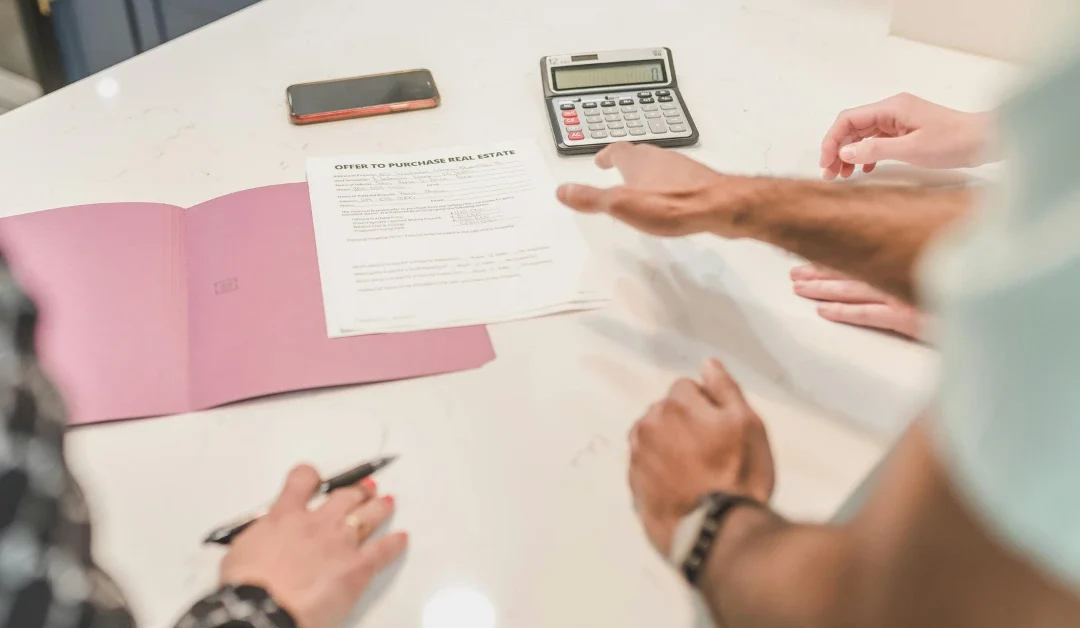Want to know for sure if a rental property is right for you?
You’re in the right place. Today, I’ll share with you the foolproof method I use to assess properties in my own seven-figure portfolio so you can evaluate a rental property investment and avoid the same expensive mistakes I’ve made in the past.
We’ll cover:
- The metrics you need to keep in mind
- The property-specific factors to consider
- And how to analyze the market
All so you make the best decision for you and your rental property business.
Sound good? Let’s dive in.
Key takeaways:
- Know the financial formulas for things like cash flow, ROI, vacancy rate, and more
- Know property-specific factors that affect your investment, such as location and property condition
- Analyze the market for things like rental demand and rental rates
1. Key financial metrics
The first step in evaluating a rental property investment is knowing your numbers. Let’s break them down.
Cash flow
A property’s cash flow is the difference between a property’s income and expenses. Essentially, it’s the amount of money your rental property is bringing in after covering the costs to upkeep it. The calculation is as follows:
Cash flow = rental income – expenses.
ROI
The return on investment (ROI) for your property is the profit you make from your rental income after expenses.
You can use this formula to figure out if your investment will yield a good return:
ROI = ((annual income – annual expenses) / total cash investment) x 100.
The result will be a percentage, such as 8.7% or 10.1%.
Operating expenses
To perform an accurate cash flow and ROI calculation, you need to know what counts as expenses on your rental property. Common expenses include:
- Monthly mortgage payment
- Property taxes
- Insurance
- Maintenance costs
- Property management fees (if applicable)
- Utilities
- HOA fees (if applicable)
- Legal fees
- Landscaping
- Missed rent payments due to vacancies
- And pest control
Tip: The more detailed your expense calculations are, the better. This video will help with some expenses you may not have considered:
Vacancy rate
The vacancy rate is the amount of time a property is vacant. This will help you evaluate how well a rental property may perform. To calculate the vacancy rate, use this formula:
Vacancy rate = the percentage of vacant days the property is vacant / the number of days it’s available to rent.
There is also an economic vacancy rate. This is the amount you could be earning (gross potential rent) versus what you are earning (actual rental income) because of the rental property being empty. To calculate this rate, use this formula:
Economic vacancy rate = ((gross potential rent – actual rental income) / gross potential rent) x 100.
Like the ROI, this will also be a percentage.
Cap rate
The cap rate is an assessment of the rate of return on the real estate investment property. To calculate the cap rate, use this formula:
Cap rate = (net operating income (annual revenue – annual operating expenses) / property value) x 100.
Like other formulas, the cap rate is also expressed as a percentage.

Cash on cash return
Cash on cash return is how much money you’re earning off of the cash you invested into your property. Here’s the formula:
Cash in = acquisition price of the building + closing costs – outstanding mortgage balance.
Cash on cash return = (annual cash flow / cash in) x 100.
Gross rent multiplier
Gross rent multiplier (GRM) is a metric. Real estate investors use it to determine a building’s worth. To calculate it, the formula is:
Gross rent multiplier = (property price / gross rental income (total income before expenses)) x 100.
Now, let’s talk about property-specific factors.
2. Property-specific factors
When evaluating a potential rental property investment, you’ll want to pay attention to certain factors. This is what you should look out for.
Location
Your property’s location affects your rental income potential as well as the types of tenants you’ll attract.
When reviewing a neighborhood, think about:
- Nearby schools or colleges
- Transport links
- Local amenities
- And average rental rates
I talk more about where to find the best rental property in this video:
Property condition and size
The property’s condition is one of the most important factors to pay attention to when you evaluate a rental property investment.
I know this from personal experience–I ended up spending over $30,000 fixing my first property because I didn’t do my due diligence as thoroughly as I should have. To avoid my mistake, make sure you learn everything you can in as much detail as you can.
For example:
- How old is the property?
- What renovations have been done?
- What structural elements need to be replaced or repaired soon? For example, roofing, plumbing, electrical systems, sewage lines, and so on.
- What is the energy efficiency rating?
- And does it comply with local building codes?
You can find this all out with a thorough third-party inspection and by asking the previous owners for any maintenance records.
Appreciation
For a property to be a good investment, you want it to increase in value over time. Price appreciation depends on a variety of factors, such as:
- Supply and demand in the area
- Interest rates
- Economic growth in the location
- Future development plans in the neighborhood
- Any renovations you make as an investor
I would suggest buying a property that not only gives you a great ROI on rental income but also a great return when you eventually sell the property.
Property management
While you can hire property managers to help you, I recommend self-managing your first property to save on expenses. My method is to empower my tenants to manage immediate issues, and then I reimburse them.
However, some properties are too complex to manage. These include, for example, multi-unit buildings. These are not the best investment opportunities for new investors, but if you did invest in these types of building, you’d need to consider if the rental income is high enough to cover the expense of a property management team.
Next, let’s go over what you’ll need to analyze in the market.

3. Market analysis
Now, it’s time to consider the local market. Here’s what you need to analyze.
Rental demand and vacancy rates
If you want to build a successful rental property business, then you need to buy a property in an area where rent demand is high.
Some places are naturally more popular. For example:
- Major cities with high job opportunities
- College towns
- And areas with good schools
However, sites like Zillow will show you the actual rental demand rates in the neighborhood you’re considering.
A vacancy rate, in this case, is the average percentage of empty properties. An area with a high vacancy rate might be more difficult to find tenants.
You can mitigate vacancy rates if you choose a college town and rent to students who are constantly coming and going. That way, you’re less dependent on one tenant for rent.
Rental rates
As a landlord, you can choose your own rental pricing. However, you want it to be competitive within the local market.
So, look at sites like Zillow to see the rental rates for similar properties in the area. You want the rental rates to be fair, but you’ll also need to cover your expenses to maintain cash flow and give you a good ROI.
Economic conditions
Finally, you’ll want to study the area’s economics.
For example:
- Job market: An area with great job opportunities attracts young professionals and families that tend to make great tenants.
- Population growth: A neighborhood with fast population growth equals more tenants looking for a place to rent.
- Local economy: Take a look at the average income of the residents in the area. This can give you an idea of how much you can charge for rent and the type of tenants you may attract.
Use resources like the US Census and Statista to find out these metrics.
What’s next?
And there you have it! That’s how to evaluate a rental property investment.
If you want to start investing profitably while avoiding expensive mistakes, I’m here to help. As a real estate investor who started as a beginner like you and now has a seven-figure portfolio, I help dozens of new real estate investors do the same.
You can learn more about how to work with me here. I’m looking forward to it!


